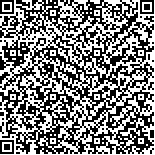下载中心
优秀审稿专家
优秀论文
相关链接
摘要

高光谱遥感可同步获取地表覆盖空间影像和连续且精细的光谱数据,能够实现对地物的精细分类与识别。然而,高光谱图像的高维特性对分类带来巨大挑战。为此,本文探讨了一种基于卷积核哈希学习的高光谱图像分类方法。哈希学习可以将高维信息表达为低维哈希编码,通过计算哈希编码内积并借助最小汉明距离实现分类。为了有效表达非线性数据,又发展了核哈希学习方法。然而,直接应用核哈希学习进行高光谱图像分类存在运行速度慢和未考虑空间邻域信息的不足。为此,本文在核哈希学习中引入径向基函数RBF(Radial Basis Function)作为损失函数以提高运行效率;同时,借助四维卷积操作充分表达空间邻域信息,提出了基于卷积核哈希学习的高光谱图像分类方法CKSH(Supervised Hashing with RBF Kernel and Convolution),同时探讨了该方法在仅利用光谱特征和光谱—空间联合特征上的分类效果。在国际通用测试数据Indian Pines和University of Pavia上进行了实验,结果表明:本文提出的CKSH方法优于传统分类方法(支持向量机、随机子空间)和其他哈希学习方法(如谱哈希、球哈希、监督离散哈希、潜在因子哈希等),同时在不同训练样本数量条件下均取得了较高的分类精度,达到96.12%(Indian Pines,10%的训练样本)和98.00%(University of Pavia,5%的训练样本),从而验证了该方法的有效性。
Hyperspectral remote sensing can obtain both spatial images and continuous spectral data of land cover, thus realizing the classification and identification of ground objects. However, the high-dimensional characteristics of hyperspectral images pose great challenges to classification. Therefore, this paper discusses a hyperspectral image classification method based on Hash learning. Hash learning can switch high-dimensional information to low-dimensional binary encoding, and achieve classification by calculating encoding internal product and using hamming distance.To effectively express nonlinear data, one supervised hashing method is proposed. However, the disadvantage of Hash learning are that they run slowly and lack consideration for spatial neighborhood information. Therefore, this paper introduces RBF kernel to improve efficiency. In addition, it uses four-dimensional convolution to fully express spatial information, namely Supervised Hashing with RBF Kernel and Convolution (CKSH).Experiments were carried out on the international general test data. Experimental results show that the proposed method is superior to traditional classification methods and other hash learning. Under different percentage conditions of training samples, it has achieved high classification accuracy and reached 96.12% (Indian Pine, 10%) and 98.00% (University of Pavia, 5%), which verified the effectiveness of proposed method.In view of the two problems that loss function of KSH using the L2 norm causes low efficiency, and it does not consider spatial information. This paper uses four-dimensional convolution to introduce spatial information, and applies the RBF kernel instead of the L2 norm. Experiments on general test data sets have confirmed the advantages of CKSH in classification accuracy and runtime. The reason for high accuracy and efficiency has two hands. On the one hand, CKSH uses four-dimensional convolution to mine underlying structural information. Therefore, the obtained binary encoding conducive to improving the classification performance. On the other hand, using the RBF kernel as loss function can significantly reduce the arithmetic series.

